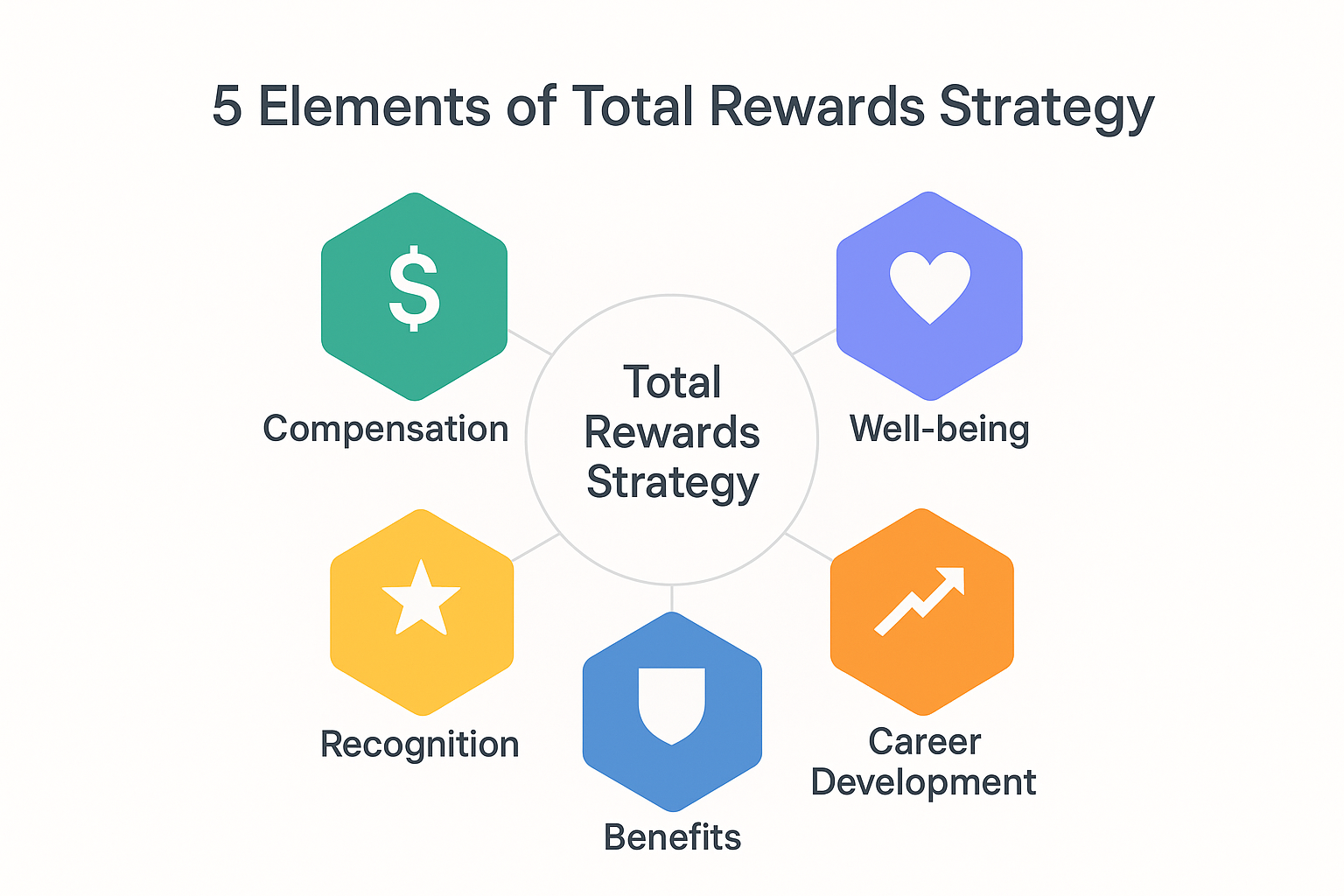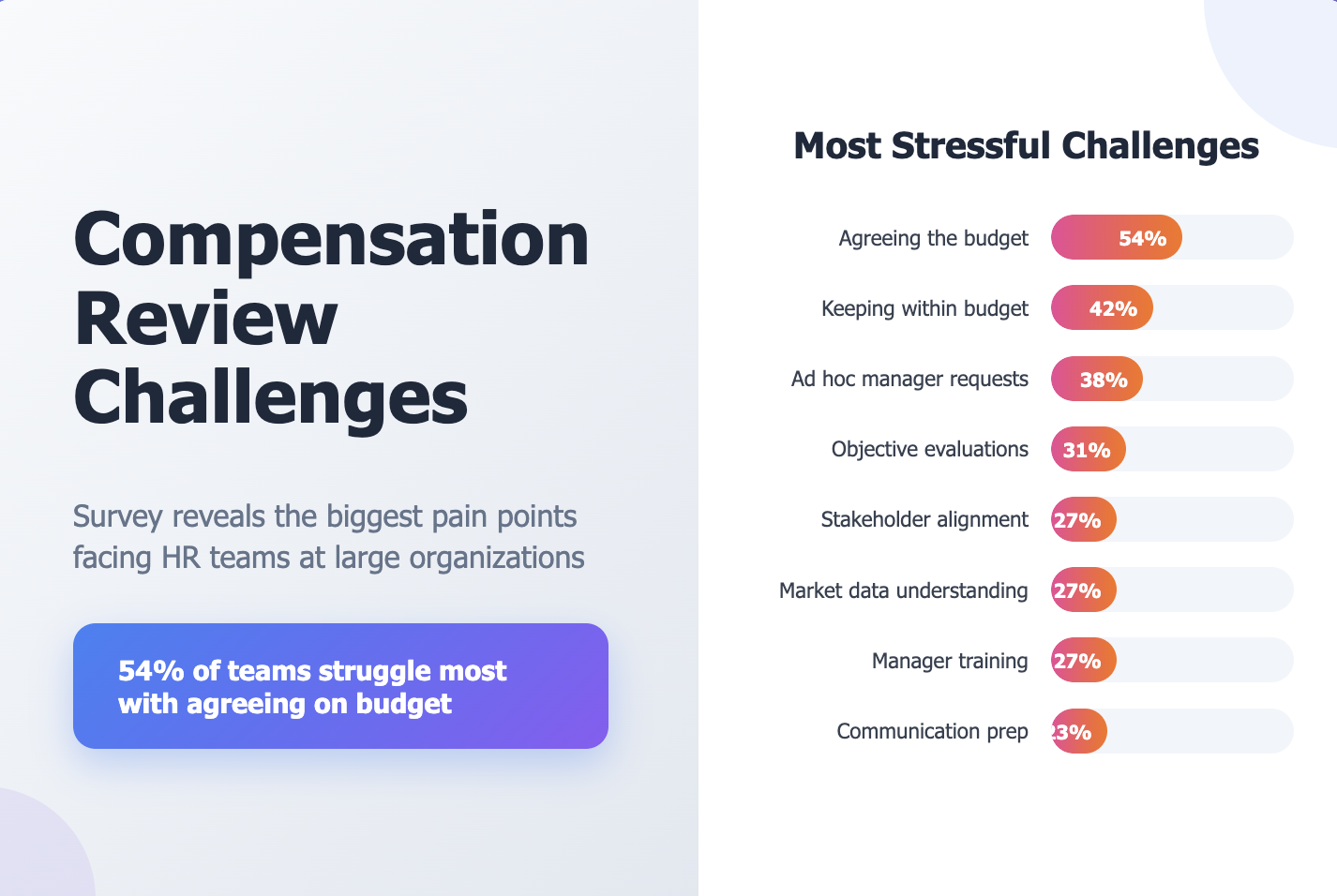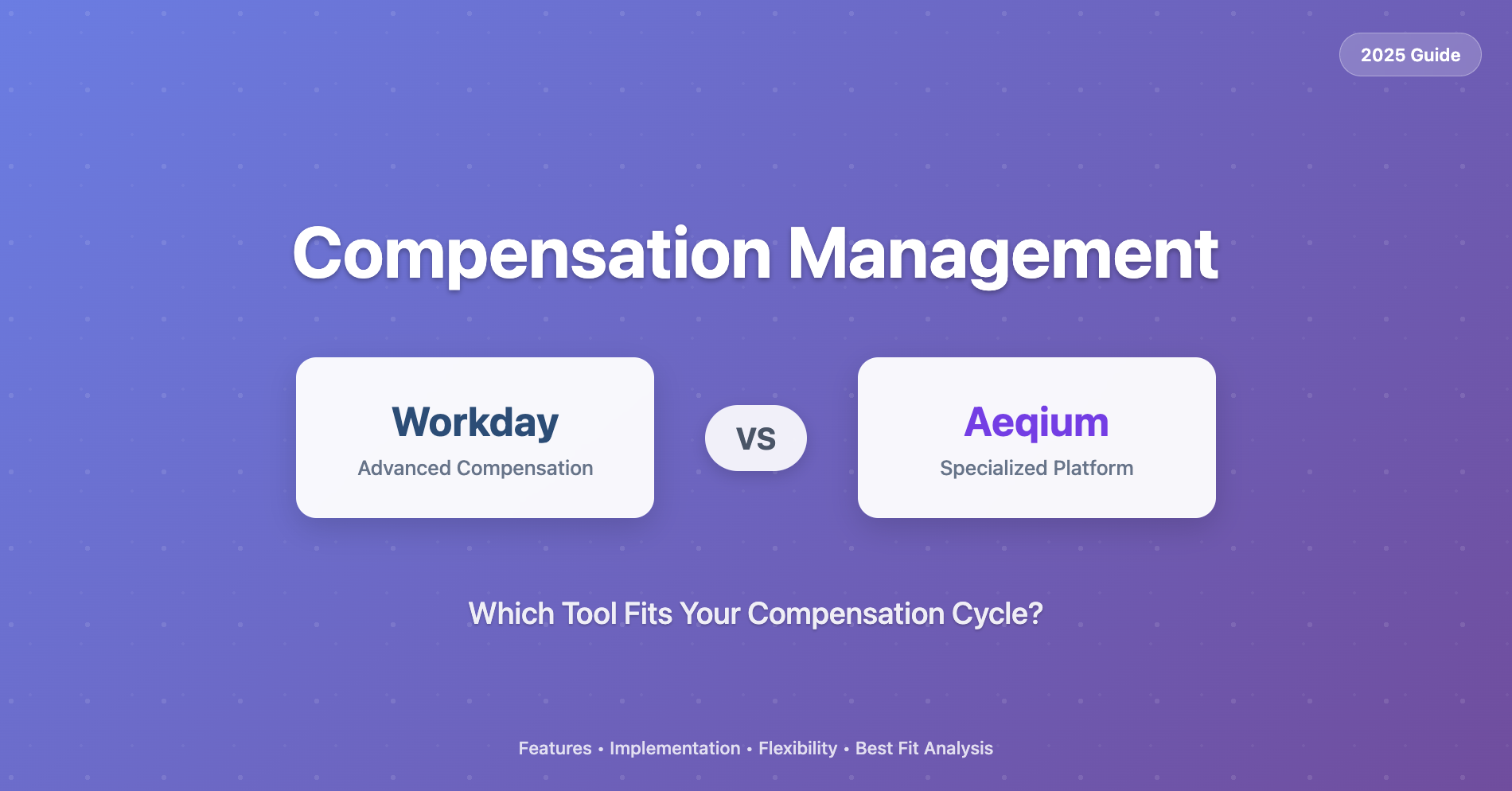The Best Software for Designing Total Rewards Strategies

Most companies think they need better benchmarking data to fix their total rewards strategy. But that's like thinking you need a better camera when what you really need is photo editing software.
The problem isn't the data. It's execution. You can have the most sophisticated market intelligence and the most thoughtful benefits philosophy, but if you're still running compensation cycles in spreadsheets, your strategy is just an expensive wish list.
What Makes Total Rewards Actually Work
Before diving into tools, let's address something that drives confusion: people talk about total rewards like it's some mystical concept that varies by company. It doesn't. There are five core elements that every successful total rewards strategy needs, and WorldatWork has been clear about this for years.
The 5 Non-Negotiable Elements
1. CompensationBase and variable pay: salary, bonuses, equity, commissions. The stuff that shows up in people's bank accounts. If you're not competitive here, nothing else matters.
2. BenefitsHealth insurance, retirement plans, PTO. The regulated stuff that keeps people financially secure and legally protected. This is table stakes in most markets now.
3. Well-beingThis goes beyond "work-life balance." Companies need to support employees' physical, mental, emotional, and financial health. The companies getting this right see real impact on retention.
4. Career DevelopmentLearning opportunities, skill development, clear advancement paths. People want to know they're not stuck. They want to see a future at your company.
5. RecognitionBoth formal programs and day-to-day appreciation. This is often the most overlooked element, but it's also one of the highest-ROI investments you can make.
If you're missing any of these five elements, you don't have a total rewards strategy. You have a compensation plan with some benefits attached.
The Tools That Actually Matter
Companies spend six figures on tools that don't move the needle, while the most critical piece of their tech stack is Excel. Here's what you actually need:
Market Intelligence and Benchmarking Tools
What they support: Compensation
The usual suspects are Radford, Mercer, and PayScale. These give you the market data foundation you need to make competitive offers.
But the data is only as good as your ability to act on it. Too many companies obsess over having the "perfect" benchmarking data while their managers make compensation decisions based on gut feel because the data never makes it to the point of decision.
Best practice: Pick one good source that covers your industry and geography. Don't overthink it. The difference between perfect data and good-enough data is smaller than the difference between having a process and not having one.
Job Architecture and Leveling Frameworks
What they support: Compensation + Career Development
Tools like PayFactors and Korn Ferry Job Architecture help you build consistent job structures. This is where companies get tripped up. They try to skip this step and jump straight to the fun stuff.
Without clear job levels, managers don't know what they're paying for, employees don't know how to advance, and compensation decisions look arbitrary (because they probably are).
Benefits Administration Platforms
What they support: Benefits + Well-being
Workday Benefits, Benefitfocus, PerkBox handle the logistics of benefits enrollment and management.
Companies often think they need more benefits when what they really need is better communication about the benefits they already have. These platforms can help with that, but don't expect technology to fix a benefits strategy problem.
Performance Management and Recognition Systems
What they support: Recognition + Career Development
Lattice, 15Five, Bonusly connect performance to rewards and create opportunities for recognition.
The key insight: these tools work best when they're integrated with compensation planning. If performance reviews happen in one system and merit increases happen in spreadsheets, you're missing the connection that makes pay-for-performance actually work.
Compensation Planning Software (This Is Where Most Companies Fail)
What they support: Everything, especially the execution piece
Here's the uncomfortable truth: even with great benchmarking data, solid job architecture, and thoughtful benefits, most companies still execute their compensation cycles like it's 1995.
Spreadsheets. Everywhere.
This happens at companies with 50 employees and companies with 50,000 employees. The comp team sends out spreadsheets, managers fill them out (maybe), they come back with errors, there's a frantic reconciliation process, and somehow decisions get made.
This is where tools like Aeqium become critical. Compensation planning is the only place where all five elements of total rewards come together in a single decision.
When a manager is deciding on a merit increase, they're considering:
- Compensation (obviously)
- Career development (is this person ready for the next level?)
- Recognition (how do we reward strong performance?)
- Well-being (what's the total package impact?)
- Benefits (how does this affect their overall rewards?)
If that conversation is happening in a spreadsheet, you're not executing a total rewards strategy. You're just doing math.
What good compensation planning software actually does:
- Gives managers the context they need (market data, performance ratings, budget constraints) at the point of decision
- Ensures consistency across the organization through built-in guardrails and approval workflows
- Connects compensation decisions to broader career development and recognition conversations
- Eliminates the errors and delays that come with spreadsheet-based processes
- Provides visibility into how total rewards spend is allocated across all five elements
Analytics and Communication Platforms
What they support: All five elements
Visier, Tableau, Power BI help you measure what's working and communicate value to employees and executives.
The analytics piece is crucial because total rewards is one of the few areas in business where you're spending a ton of money (often 60-70% of total expenses) without much visibility into ROI.
How to Actually Build This (Without Going Broke)
Building a total rewards tech stack doesn't require buying everything at once. Start with the foundation and build up.
Phase 1: Get the basics right
- Market data (pick one good source)
- Job architecture (even if it's simple)
- Compensation planning process (get out of spreadsheets)
Phase 2: Add sophistication
- Benefits platform integration
- Performance management connection
- Recognition programs
Phase 3: Optimize and analyze
- Advanced analytics
- Employee communication tools
- Predictive modeling
The key is integration. Your tools need to talk to each other, or you'll end up with a bunch of expensive point solutions that don't actually solve your execution problem.
The Bottom Line
HR leaders are frustrated because their total rewards strategy isn't driving the results they expected. Usually, the strategy is fine. The problem is execution.
You can have the most thoughtful compensation philosophy in the world, but if your managers are making decisions in spreadsheets without context, you're not going to get the outcomes you want.
The companies that get total rewards right understand this: strategy is important, but execution is everything.
That's why Aeqium focuses specifically on the execution piece. Rather than trying to be your benchmarking provider or your benefits platform or your performance management system, Aeqium aims to be the best in the world at helping you execute compensation decisions that reflect your total rewards strategy.
Your total rewards strategy isn't what you write in a presentation. It's what actually happens when your managers make compensation decisions. Make sure you have the tools to support that.




